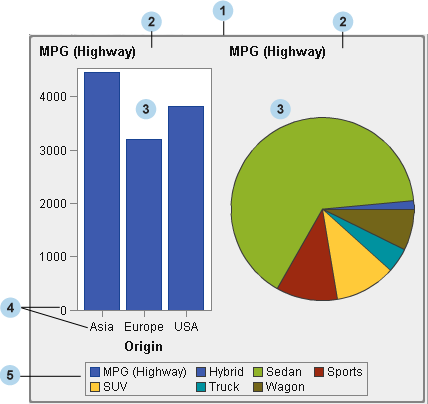Components of a Graph Object
In general, a graph object consists
of one or more cells that contain a composite of one or more graph
elements.
Components of a Graph Object

| 1 | Graph
object
a visual representation
of data. The graph object can contain one or more cells that have
one or more graph elements.
|
| 2 | Cell
a distinct rectangular
subregion of a graph object that can contain graph elements, axes,
and legends. Multiple cells are arranged as columns and rows. The
example graph object contains two cells that are arranged as columns.
|
| 3 | Graph
element
a visual representation
of data, such as a scatter plot or a bar chart. The example shows
a bar chart and a pie chart, each in its own cell. Multiple compatible
graph elements can be overlaid in a cell.
|
| 4 | Axis
refers collectively
to the axis line, the major tick marks, the major tick mark values,
and the axis label. In multi‐cell graph objects, the columns
and rows of cells can share common axes if the cells have the same
data type.
|
| 5 | Legend
refers collectively
to the legend border, one or more legend entries (where each entry
has a symbol and a corresponding label), and a legend title.
|
Copyright © SAS Institute Inc. All rights reserved.